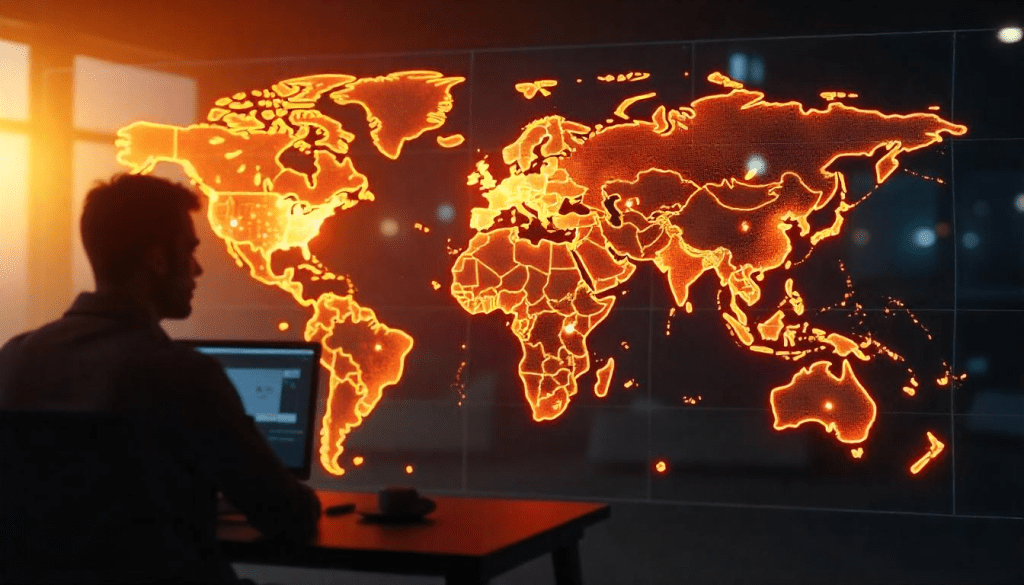Cyber warfare is the use of digital attacks by one nation or organization against another to cause disruption, damage, or even destruction. These attacks often target critical infrastructure, government systems, or businesses with the goal of stealing information, creating chaos, or weakening an opponent’s defenses. Unlike traditional warfare, cyber warfare does not require physical conflict—it happens behind computer screens, where hackers, government agencies, and cybercriminals engage in battles that can have real-world consequences.

Understanding Cyber Warfare
In today’s digital age, nations rely heavily on technology for communication, financial systems, military operations, and infrastructure. Cyber warfare exploits these dependencies by using cyberattacks as weapons to gain an advantage. These attacks can be conducted by state-sponsored hackers, cybercriminal organizations, or even individual actors with malicious intent.
Cyber warfare is not just about hacking into systems; it involves strategic planning, intelligence gathering, and highly sophisticated tactics. Governments and organizations worldwide invest heavily in cybersecurity measures to defend against such threats, but attackers continuously evolve their methods, making it an ongoing battle.
Types of Cyber Warfare Attacks
Cyber warfare encompasses various forms of digital attacks, each with different objectives and impacts. Some of the most common types include:
1. Denial-of-Service (DoS) and Distributed Denial-of-Service (DDoS) Attacks
These attacks flood a target’s network or website with excessive traffic, causing it to slow down or crash. DDoS attacks are often used to disrupt government agencies, financial institutions, and large corporations.
2. Malware Attacks
Malicious software, or malware, is designed to infiltrate and damage computer systems. Examples include viruses, worms, trojans, and ransomware. Ransomware, in particular, encrypts files and demands payment for their release, crippling organizations and governments.
3. Phishing and Social Engineering
Phishing attacks trick individuals into revealing sensitive information, such as login credentials or financial details, through fraudulent emails, messages, or websites. Social engineering exploits human psychology to manipulate people into divulging confidential information.
4. Espionage and Data Breaches
Cyber espionage involves stealing classified or sensitive information from governments, corporations, or individuals. These attacks can be used for intelligence gathering, corporate spying, or political manipulation.
5. Critical Infrastructure Attacks
These attacks target essential services such as power grids, water supply systems, and transportation networks. Disrupting these services can create panic, economic damage, and even loss of life.
6. Defacement Attacks
In a defacement attack, hackers replace the content of a website with their own messages, often for political or ideological reasons. Government websites are frequent targets.
7. Cyber Terrorism
Cyber terrorism involves using digital attacks to create fear, damage national security, or disrupt social stability. Terrorist groups may use cyber warfare to spread propaganda, recruit members, or attack critical infrastructure.
Real-World Examples of Cyber Warfare
Several cyber warfare incidents have made headlines over the years, highlighting the seriousness of digital conflicts. Here are a few notable examples:
- Stuxnet (2010): A highly sophisticated cyberattack believed to be developed by the U.S. and Israel targeted Iran’s nuclear facilities. The Stuxnet worm disrupted uranium enrichment, delaying Iran’s nuclear program.
- Sony Pictures Hack (2014): Allegedly carried out by North Korean hackers, this attack leaked confidential data from Sony Pictures, including unreleased films and employee details, as retaliation for a movie portraying North Korea’s leader.
- NotPetya (2017): Initially disguised as ransomware, NotPetya was a Russian-backed attack targeting Ukrainian infrastructure but quickly spread globally, causing billions in damages.
- SolarWinds Attack (2020): A sophisticated cyber espionage campaign compromised several U.S. government agencies and businesses by inserting malicious code into the SolarWinds software, enabling data theft and surveillance.
The Role of Governments and Organizations in Cyber Defense
Governments and cybersecurity agencies worldwide are constantly working to prevent and mitigate cyber warfare threats. Here are some key measures they take:
1. Cybersecurity Policies and Frameworks
Governments establish cybersecurity regulations and frameworks to protect critical infrastructure and sensitive data. The U.S. Cybersecurity and Infrastructure Security Agency (CISA) and the European Union Agency for Cybersecurity (ENISA) are examples of organizations focused on cyber defense.
2. Cyber Threat Intelligence and Monitoring
Continuous monitoring and intelligence gathering help detect and prevent cyberattacks before they cause damage. Security agencies collaborate globally to share threat intelligence and respond to cyber incidents.
3. Ethical Hacking and Penetration Testing
Organizations conduct ethical hacking, also known as penetration testing, to identify vulnerabilities in their systems and improve security before real attackers exploit them.
4. Public Awareness and Training
Educating employees, businesses, and individuals about cybersecurity threats helps prevent phishing attacks, malware infections, and other cyber risks.
5. Cyber Defense Strategies and Counterattacks
Some governments invest in cyber weapons and defensive capabilities to counter cyber threats. This includes launching counterattacks to disable enemy infrastructure or hacking groups.
The Future of Cyber Warfare
As technology evolves, so do the methods used in cyber warfare. The increasing use of artificial intelligence (AI), machine learning, and quantum computing will significantly impact how cyber conflicts unfold. Future threats may include:
- AI-Powered Cyberattacks: Attackers will leverage AI to automate and enhance hacking techniques, making cyberattacks faster and more effective.
- Weaponized Deepfakes: Deepfake technology can be used to spread misinformation, manipulate public opinion, and destabilize governments.
- Cyber-Physical Attacks: As the Internet of Things (IoT) grows, cyberattacks could target smart cities, autonomous vehicles, and industrial control systems.
- Space-Based Cyber Warfare: As nations deploy satellites for communication and military purposes, cyber threats could extend into space.
Conclusion
Cyber warfare is a growing global threat with the potential to disrupt economies, governments, and daily life. It operates silently but carries serious consequences, from stolen data to national security risks. As cyberattacks become more advanced, governments, organizations, and individuals must stay vigilant and invest in cybersecurity measures to protect against digital warfare.
Understanding cyber warfare is essential for staying prepared in an increasingly digital world. Whether you’re an individual, a business owner, or a policymaker, cybersecurity should be a priority in the fight against cyber threats.